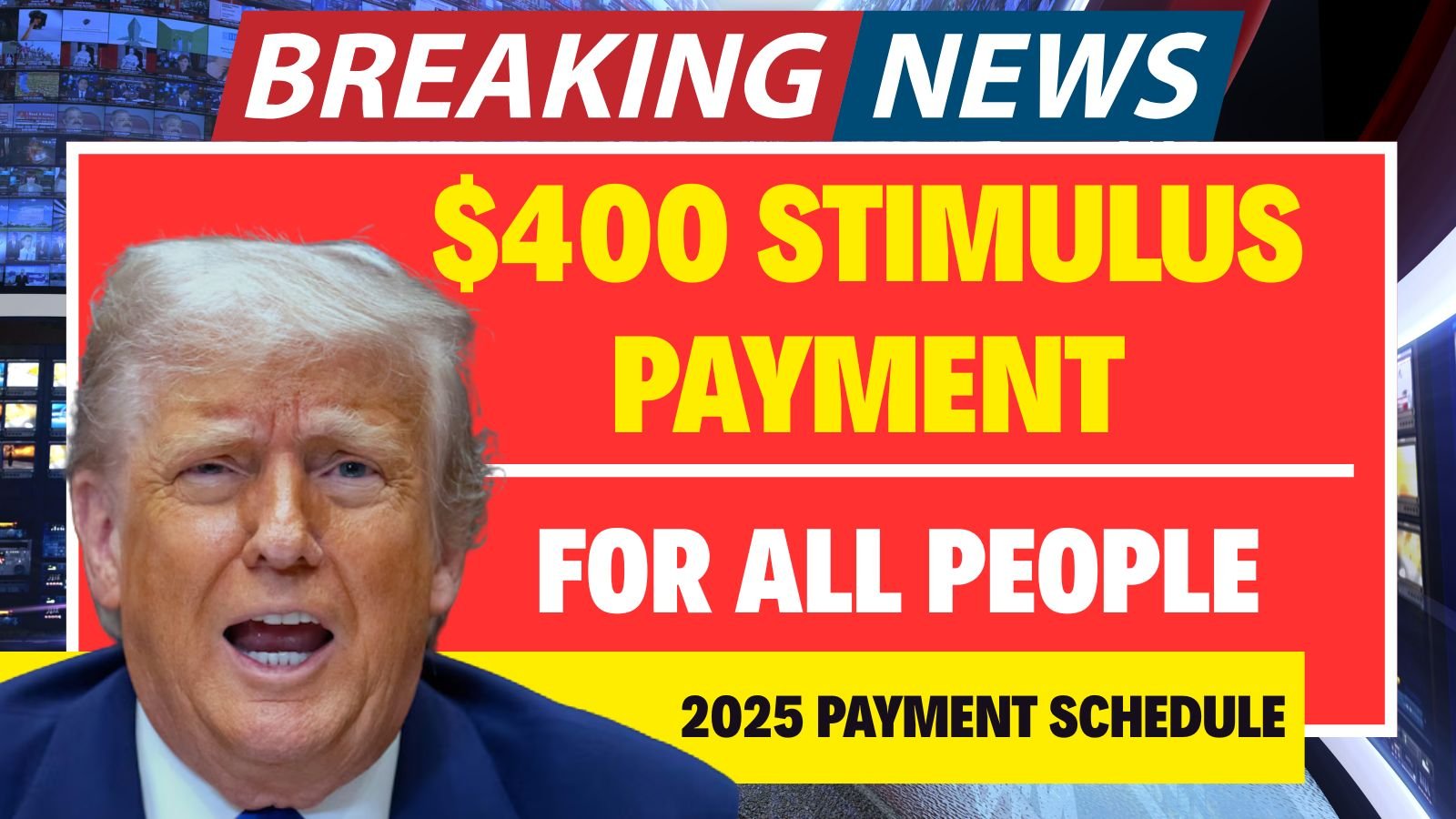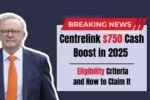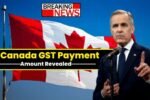In recent years, inflation has quietly crept into nearly every corner of American life. The price of basic necessities—from gas to groceries to rent—has surged, leaving middle-class families across the country, particularly in densely populated states like New York, struggling to stay afloat. As living costs continue to rise, one major initiative has emerged as a critical measure of relief: the $400 Stimulus Payment recently announced by New York Governor Kathy Hochul. This targeted assistance aims to provide much-needed financial support to working families stretched thin by economic pressures.
This measure, part of the 2026 fiscal year budget, is not just a financial stopgap; it’s a meaningful response to the everyday struggles of millions of New Yorkers. For those juggling utility bills, childcare, rent, and food expenses, the $400 Stimulus Payment represents more than just a check—it’s a symbol that their government sees them, hears them, and is taking concrete action to ease their burden.
$1,400 Stimulus Check in 2025? You Won’t Believe Who Qualifies
Why the $400 Stimulus Payment Matters
Governor Kathy Hochul’s administration has made it clear that the $400 Stimulus Payment is specifically intended for those grappling with the effects of relentless inflation. The policy addresses rising costs in a straightforward way: by putting money directly into the hands of people who need it most. With the cost of living escalating at a rate not seen in decades, many residents are having to make painful sacrifices, cutting back on essentials, skipping meals, or digging into savings just to get by.
In this climate, a $400 infusion of funds might not seem massive on paper, but for a family facing mounting utility bills or a gap in rent, it can be the difference between survival and crisis. By offering immediate relief while also investing in broader economic reforms, the program delivers both short-term and long-term solutions.
Who Qualifies for the $400 Stimulus Payment?
Eligibility for the $400 Stimulus Payment is carefully designed to ensure the funds reach the individuals and families who need them most. The core criteria include:
- Residency Requirement: Only New York State residents who have filed their 2023 income tax returns (Form IT-201) are eligible.
- Independence Clause: You must not be claimed as a dependent on someone else’s tax return.
- Middle-Class Focus: The program prioritizes middle- and lower-middle-income earners, especially those who manage household expenses independently.
While exact income thresholds haven’t been disclosed, officials have clarified that high-income earners will be excluded from this program. The goal is clear: direct financial help should reach working families, not those already financially secure.
Importantly, this approach recognizes the unique financial vulnerability of middle-income earners. These families often earn too much to qualify for traditional aid programs but still face immense financial pressure in high-cost regions like New York.
How the Payments Will Be Distributed
The New York State government has emphasized transparency and accessibility in the payment process. The $400 Stimulus Payment will be distributed between October and November 2025, providing eligible families with timely assistance before the winter season—when heating bills and holiday costs further strain budgets.
- Method: Payments will be issued via physical checks mailed directly to recipients.
- Geographic Fairness: Unlike some previous relief programs, this payment is not limited by ZIP code, population density, or urban vs. rural residency. Any eligible resident, regardless of where they live in New York, will receive their payment.
This inclusive strategy avoids the complications of electronic payments, ensuring that even those without consistent digital access can receive their funds without delay or error.
It’s estimated that more than 8.2 million households across the state will benefit from this program, a scale that highlights the program’s ambition and the gravity of New York’s economic challenges.
The Broader Economic Vision Behind the Stimulus
While the $400 Stimulus Payment is a headline-making part of the 2026 budget, it’s far from the only measure intended to combat economic distress. Governor Hochul’s fiscal strategy includes several bold moves that aim to not only offer immediate relief but also build a more resilient and equitable economy in the long term.
1. Tax Relief for the Middle Class
The state is enacting the lowest middle-class tax rates seen in over 70 years, helping working families keep more of what they earn. This permanent tax relief is designed to supplement the short-term impact of the stimulus.
2. Expanded Child Tax Credit
The administration has significantly expanded the Child Tax Credit, providing parents with extra monthly financial assistance to cover educational and childcare costs.
3. Universal Free School Meals
Another standout policy in the FY 2026 budget is the implementation of universal free meals in all public schools. This not only ensures children receive nutritious food but also lifts a financial burden off families already struggling to make ends meet.
Together, these initiatives offer a layered approach: while the $400 Stimulus Payment acts as immediate support, the additional policies aim to stabilize and strengthen families’ finances over time.
What This Means for Everyday New Yorkers
For many New Yorkers, inflation isn’t an abstract economic term—it’s a daily reality. Rising rent, soaring grocery prices, transportation costs, and unexpected medical bills have forced families to dip into emergency savings or rely on credit cards just to cover necessities. In such a scenario, the $400 Stimulus Payment acts as a much-needed lifeline.
Beyond the financial relief, the psychological benefit of knowing the government recognizes and is addressing these struggles is equally important. Receiving a stimulus check in the mail doesn’t just ease financial stress—it restores faith in governance and shows empathy at a policy level.
For single parents juggling multiple jobs, for elderly residents on fixed incomes, and for young families just starting out, this payment could mean a moment to breathe, to catch up, or to plan ahead—however modestly.
Deadline Awareness and Administrative Preparedness
The rollout of the $400 Stimulus Payment has been meticulously planned, with state officials committing to swift and organized distribution. Eligible recipients should be aware of the delivery window—October to November 2025—and check their mail regularly during this time.
No additional paperwork or application process is required for those who have already filed their 2023 returns and meet eligibility standards. This automatic distribution removes barriers and reduces administrative hurdles, ensuring maximum participation.
A Case Study in Practical Relief
Let’s consider a real-world example. A working mother of two in Buffalo who earns just under the income threshold may receive a $400 stimulus payment. That amount could go toward buying winter clothes for her children, catching up on utility bills, or even just giving her a cushion for unplanned expenses. In another household, it might cover a car repair that allows someone to continue working.
These aren’t luxury purchases—they’re essentials. And that’s what makes the $400 Stimulus Payment so impactful: it’s help where it’s needed most.
Final Thoughts: A Policy That Reflects Compassion and Competence
In times of economic difficulty, targeted government intervention can make all the difference. The $400 Stimulus Payment is a model of such an intervention—timely, thoughtfully structured, and focused on real human needs. It reflects a government willing to confront economic inequality not just with rhetoric but with actionable, impactful programs.
As October and November 2025 draw closer, this initiative has the potential to significantly alleviate financial strain across millions of households. But more importantly, it sends a message: that in New York, no one is forgotten, and every working family matters.
FAQs
Q: Who is eligible for the $400 stimulus payment in New York?
A: Residents who filed a 2023 state tax return (Form IT-201) and are not listed as dependents.
Q: When will the payments be distributed?
A: Checks will be mailed between October and November 2025.
Q: Will income limits apply?
A: Yes, although specific thresholds have not been published, high-income earners are excluded.
Q: Do I need to apply to receive the payment?
A: No, eligible individuals will automatically receive the payment by mail.
Q: Is this a one-time payment?
A: Yes, the $400 stimulus is a one-time initiative under the 2026 state budget plan.
If you’re a New York resident struggling to keep pace with rising living costs, the $400 Stimulus Payment could offer not just financial relief but a renewed sense of hope. Don’t miss out—check your eligibility and make sure your tax return is up to date.
Some Important Link
| Telegram Group | Click Here |
| WhatsApp Group | Click Here |
| Home Page | Click Here |






